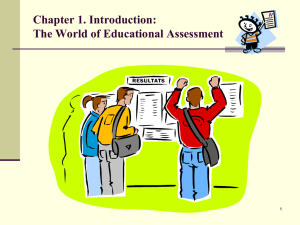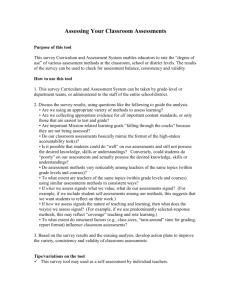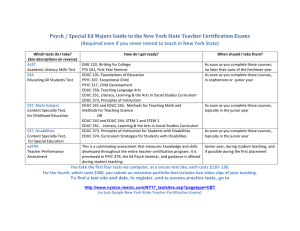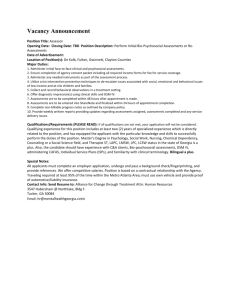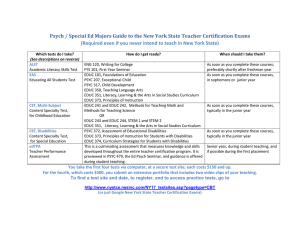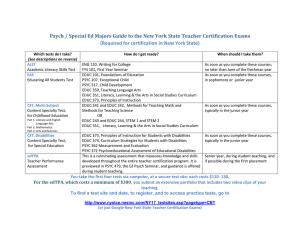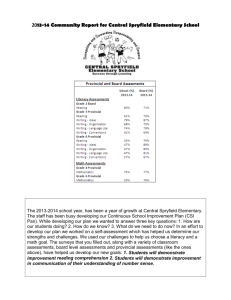Worksheet
advertisement
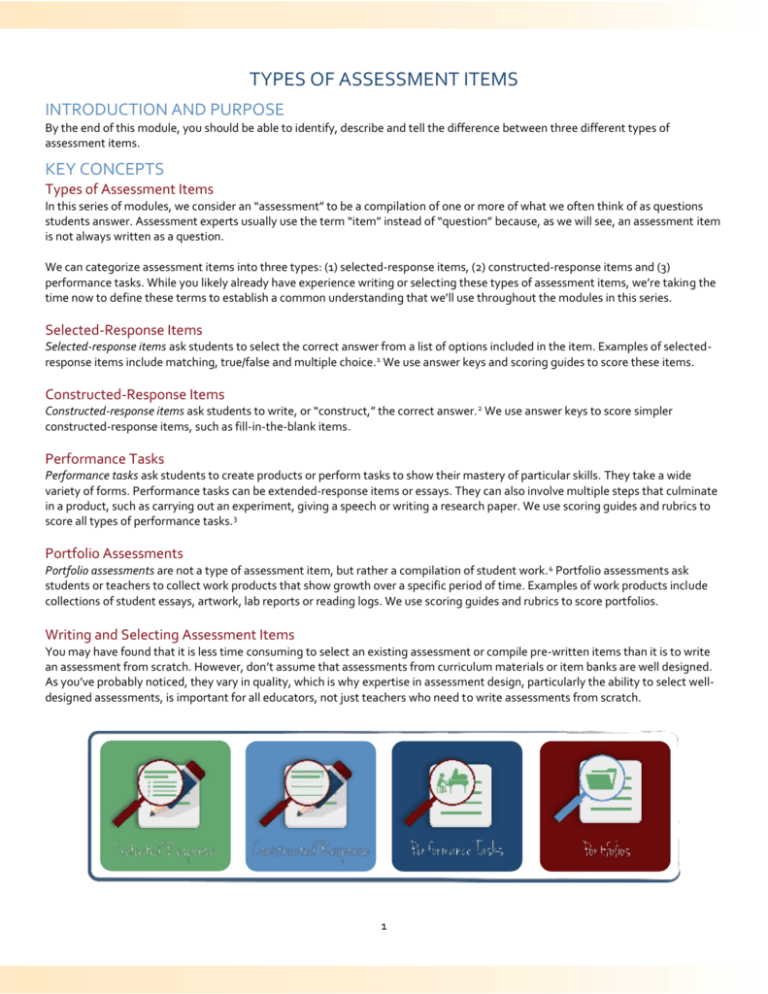
TYPES OF ASSESSMENT ITEMS INTRODUCTION AND PURPOSE By the end of this module, you should be able to identify, describe and tell the difference between three different types of assessment items. KEY CONCEPTS Types of Assessment Items In this series of modules, we consider an “assessment” to be a compilation of one or more of what we often think of as questions students answer. Assessment experts usually use the term “item” instead of “question” because, as we will see, an assessment item is not always written as a question. We can categorize assessment items into three types: (1) selected-response items, (2) constructed-response items and (3) performance tasks. While you likely already have experience writing or selecting these types of assessment items, we’re taking the time now to define these terms to establish a common understanding that we’ll use throughout the modules in this series. Selected-Response Items Selected-response items ask students to select the correct answer from a list of options included in the item. Examples of selectedresponse items include matching, true/false and multiple choice. 1 We use answer keys and scoring guides to score these items. Constructed-Response Items Constructed-response items ask students to write, or “construct,” the correct answer. 2 We use answer keys to score simpler constructed-response items, such as fill-in-the-blank items. Performance Tasks Performance tasks ask students to create products or perform tasks to show their mastery of particular skills. They take a wide variety of forms. Performance tasks can be extended-response items or essays. They can also involve multiple steps that culminate in a product, such as carrying out an experiment, giving a speech or writing a research paper. We use scoring guides and rubrics to score all types of performance tasks.3 Portfolio Assessments Portfolio assessments are not a type of assessment item, but rather a compilation of student work. 4 Portfolio assessments ask students or teachers to collect work products that show growth over a specific period of time. Examples of work products include collections of student essays, artwork, lab reports or reading logs. We use scoring guides and rubrics to score portfolios. Writing and Selecting Assessment Items You may have found that it is less time consuming to select an existing assessment or compile pre-written items than it is to write an assessment from scratch. However, don’t assume that assessments from curriculum materials or item banks are well designed. As you’ve probably noticed, they vary in quality, which is why expertise in assessment design, particularly the ability to select welldesigned assessments, is important for all educators, not just teachers who need to write assessments from scratch. 1 CHECK FOR UNDERSTANDING Assessment Item 1. Compare and contrast the three types of assessment items we discussed in this module according to how students demonstrate learning. Answer 1. Compare and contrast the three types of assessment items we discussed in this module according to how students demonstrate learning. Selected-response items ask students to select the correct answer from a list of options included in the item, while constructedresponse items ask students to write, or construct, the correct answer instead of selecting it. Constructed-response items are similar to written performance tasks, which ask students to create products or perform tasks to show their mastery of particular skills. Unlike constructed-response items, performance tasks can also include verbal or physical tasks. 1 Kansas State Department of Education, Assessment Literacy Project; Ohio Department of Education, “How to Design and Select Quality Assessments”; Relay Graduate School of Education, Designing and Evaluating Assessments (2014); and Rhode Island Department of Education, “Deeping Assessment Literacy.” 2 Ibid. 3 Ibid. 4 Kansas State Department of Education. Assessment Literacy Project. 2
